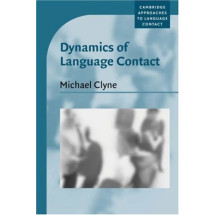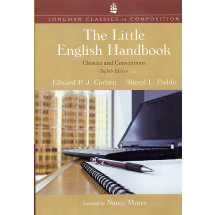Preface xiii
Abbreviations xv
1 Linguistic Differences: Where Do They Come From? 1
1.1 Linguistic Differences 1
1.2 Cultural Differences 3
1.3 Why Contrastive Analyses? 5
1.4 What This Book Is About 6
Exercises 7
2 Sounds and Writing Systems: How to Speak and Write 9
2.1 Introduction 9
2.2 English Sound Systems 10
2.2.1 English Consonants 10
2.2.2 English Vowels 12
2.3 Korean Hangul Alphabet and Romanization 13
2.4 Korean Sound Systems 15
2.4.1 Korean Consonants 15
2.4.2 Korean Vowels 17
2.5 Syllable Structures 18
2.5.1 English Syllable Structures 18
2.5.2 Korean Syllable Structures 20
2.6 Suprasegmental Features 21
2.6.1 English Suprasegmental Features 21
2.6.2 Korean Suprasegmental Features 22
2.7 Contrastive Notes 23
2.7.1 Consonants 23
2.7.2 Different Vowel Sets 24
2.7.3 Syllable and Consonant Clusters 24
2.7.4 Stress vs. Nonstress 25
2.8 Conclusion 25
Exercises 26
3 Words: Where Every Sentence Begins 29
3.1 Introduction 29
3.2 English Parts of Speech 29
3.2.1 Nouns 30
3.2.2 Verbs: Main and Auxiliary 30
3.2.3 Adjectives 32
3.2.4 Adverbs 32
3.2.5 Determiners 33
3.2.6 Prepositions 33
3.2.7 Particles 34
3.2.8 Conjunctions 35
3.2.9 Complementizers 36
3.3 Korean Parts of Speech 37
3.3.1 Nominals 37
3.3.2 Adnominals 41
3.3.3 Verbals: Adjective and Verb Together 42
3.3.4 Adverbials 46
3.4 Expanding Verbals and Nominals 47
3.4.1 Verbal and Nominal Derivations and Inflections in English 47
3.4.2 Verbal Inflections in Korean 48
3.4.3 Nominal Expansion in Korean 52
3.5 Contrastive Notes 53
3.5.1 Different Sets of Lexical Categories 53
3.5.2 Simple vs. Rich Verbal Inflection Systems 55
3.5.3 Simple vs. Rich Nominal Inflections 56
3.6 Conclusion 56
Exercises 57
4 Phrases: Combining Words and Building Larger Expressions 61
4.1 Introduction 61
4.2 Main Phrases in English 62
4.2.1 Noun Phrases 62
4.2.2 Verb Phrases 64
4.2.3 Adjective Phrases 65
4.2.4 Adverbial Phrases 66
4.2.5 Prepositional Phrases 67
4.2.6 Complementizer Phrases and Subordinating S (Conj-S) 68
4.3 Phrases in Korean 69
4.3.1 Nominal Phrases 69
4.3.2 Verbal Phrases: Stative and Nonstative VPs 74
4.3.3 Adverbial Phrases 78
4.4 Complex Phrases: Expanding the Size of Phrases 79
4.5 Contrastive Notes 80
4.5.1 Noun Phrases vs. Nominal Phrases 80
4.5.2 Verb Phrases and Verbal Phrases 81
4.5.3 Adnominal Phrases 82
4.5.4 Prepositions and Case Marking 82
4.6 Conclusion 83
Exercises 83
5 Grammar Rules: Constructing Sentences 87
5.1 Form and Function 87
5.2 Grammatical Functions 88
5.3 Mapping between Grammatical Function and Form 92
5.4 English Grammar Rules 93
5.4.1 Forming English Sentences 93
5.4.2 Simple English Sentences 97
5.5 Korean Grammar Rules 101
5.5.1 Forming Korean Sentences 101
5.5.2 Simple Korean Sentences 105
5.5.3 Grammar Rule for Auxiliary Constructions 106
5.6 Contrastive Notes 108
5.6.1 SVO vs. SOV 108
5.6.2 Head-Initial vs. Head-Final 108
5.6.3 Fixed vs. Free Word Order 109
5.6.4 Pro-Drop Languages 110
5.6.5 Complement Omission 111
5.7 Conclusion 111
Exercises 112
6 Tense and Aspect: Describing When and How a Situation Happens 115
6.1 Ways to Describe an Event 115
6.2 How to Describe an Event in English 118
6.2.1 Tense and Verb Inflection Form 118
6.2.2 Aspects: Ongoing and Completion 121
6.2.3 Situation Types 123
6.2.4 Sentence Types and Mood 125
6.3 How to Describe an Event in Korean 126
6.3.1 Tense in Korean 126
6.3.2 Aspect in Korean 131
6.3.3 Situation Types in Korean 134
6.3.4 Sentence Types and Mood in Korean 136
6.4 Contrastive Notes 137
6.4.1 Tense 137
6.4.2 Aspect 138
6.4.3 Sentence Types and Mood 138
6.5 Conclusion 139
Exercises 139
7 Auxiliary Systems: Helping Main Verbs 143
7.1 Introduction 143
7.2 English Auxiliary System 144
7.2.1 Modals 145
7.2.2 Aspectual Verbs: Be and Have 147
7.2.3 Periphrastic Do 149
7.2.4 Infinitival Clause Marker To 149
7.2.5 Auxiliary and Negation 150
7.3 Korean Auxiliary System 152
7.3.1 Types of Auxiliary Verbs and 152
7.3.2 Three Possible Structures 154
7.3.3 Complex Predicate Formation 156
7.3.4 Auxiliaries and Negation 161
7.4 Contrastive Notes 162
7.4.1 Syntactic Similarities and Differences 163
7.4.2 Number of Auxiliary Verbs 164
7.4.3 Types of Auxiliary Verbs, and Expressing Modality 164
7.5 Conclusion 165
Exercises 166
8 Passive: Performing an Action or Being Acted Upon 169
8.1 Introduction 169
8.2 English Passive Constructions 170
8.2.1 Canonical Passive 170
8.2.2 Prepositional Passive 173
8.2.3 Semantic and Pragmatic Constraints 175
8.2.4 Adjectivals and Get-Passive 176
8.3 Korean Passive Constructions 178
8.3.1 Lexical and Syntactic Passives 178
8.3.2 Typical Syntactic Passives 181
8.3.3 Light-Verb Pseudo-Syntactic Passive 184
8.3.4 Inchoative and Stative Pseudo-Syntactic Passive 188
8.4 Contrastive Notes 190
8.4.1 Similarities 190
8.4.2 Structural Differences 191
8.4.3 Non-Canonical Passives 191
8.5 Conclusion 192
Exercises 192
9 Interrogative Constructions: Asking a Question 195
9.1 Clausal Types and Interrogatives 195
9.2 English Interrogatives 196
9.2.1 Yes-No Questions and Answering System 196
9.2.2 Tag Questions 199
9.2.3 Alternative Questions 200
9.2.4 Direct Wh-Questions and Syntactic Structures 201
9.2.5 Indirect Wh-Questions 205
9.2.6 Infinitival Wh-Questions 207
9.2.7 Multiple Wh-Questions 208
9.3 Korean Interrogatives 208
9.3.1 Yes-No Question and Response Particles 208
9.3.2 Wh-Questions 210
9.3.3 Indirect Questions 215
9.3.4 Multiple Wh-Questions 218
9.3.5 Questions with Different Illocutionary Force 219
9.4 Contrastive Notes 220
9.4.1 Polar Questions and Response Particles 220
9.4.2 Wh-Questions: In Situ or Not 221
9.4.3 Interpreting Wh-Expressions 221
9.5 Conclusion 222
Exercises 223
10 Relative Clauses: Building Bigger Nominal Expressions 227
10.1 Modifying an NP in the Postnominal Position 227
10.2 Relative Clauses in English 228
10.2.1 Wh-Relative Clauses 228
10.2.2 Wh- vs. That-Relative Clauses 234
10.2.3 Reduced Relative Clauses 234
10.2.4 Finite vs. Infinitival Relative Clauses 235
10.2.5 Restrictive vs. Nonrestrictive Relative Clauses 236
10.3 Relative Clauses in Korean 238
10.3.1 Complex NPs 238
10.3.2 Canonical Relative Clauses 240
10.3.3 Internally Headed Relative Clauses 243
10.3.4 Pseudo-Relative Clauses 246
10.4 Contrastive Notes 249
10.4.1 Relative Pronoun or Not 249
10.4.2 Types of Relative Clauses 249
10.4.3 Context-Sensitive Relative Clauses 251
10.5 Conclusion 251
Exercises 252
11 Topic and Focus: Specifying Given and New Information 255
11.1 Introduction 255
11.2 Topic Constructions in English 256
11.3 Topic Constructions in Korean 259
11.3.1 General Properties 259
11.3.2 Semantic/Pragmatic Classifications: Aboutness, Contrastive, and Scene-Setting 261
11.3.3 Syntactic Classifications and Structures 263
11.4 Focus Constructions in English 268
11.4.1 General Properties 268
11.4.2 Cleft Constructions in English and Their Syntactic Structures 269
11.5 Focus Constructions in Korean 274
11.5.1 General Properties 274
11.5.2 Cleft Constructions in Korean 276
11.5.3 Multiple-Nominative Focus Constructions 281
11.6 Contrastive Notes 283
11.6.1 Subject-Prominent vs. Topic-Prominent 283
11.6.2 Types of Topics 284
11.6.3 Focus Constructions: Clefts and Multiple Nominatives 285
11.7 Conclusion 286
Exercises 286
12 Comparative Constructions: Comparing Two Things or Situations 289
12.1 Introduction 289
12.2 English Comparatives 290
12.2.1 Clausal and Phrasal Comparatives 290
12.2.2 Coordination vs. Subordination Properties 291
12.2.3 Comparative Deletion and Ellipsis 292
12.3 Korean Comparatives 294
12.3.1 General Properties 294
12.3.2 Structure of Phrasal Comparatives 298
12.3.3 Structure of Clausal Comparatives 301
12.3.4 Context-Dependent Comparatives 304
12.4 Contrastive Notes 305
12.4.1 Types of Comparatives 305
12.4.2 Comparative Morphemes and Standard Markers 306
12.4.3 Comparative Deletion and Comparative Ellipsis 306
12.4.4 Context Dependency 306
12.5 Conclusion 307
Exercises 307
13 Agreement: Harmonizing Together 311
13.1 Introduction 311
13.2 Agreement in English 312
13.2.1 Agreement Features in English 312
13.2.2 Determiner-Head Agreement 313
13.2.3 Pronoun-Antecedent Agreement 313
13.2.4 Subject-Verb Agreement as Morphosyntactic Agreement 314
13.2.5 Subject-Verb Agreement as Index Agreement 314
13.3 Agreement in Korean 316
13.3.1 Subject-Verb Agreement as Honorific Agreement 316
13.3.2 Addressee Agreement 317
13.3.3 Multiple Honorification 318
13.3.4 Agreement in Auxiliary Constructions 319
13.4 Contrastive Notes 321
13.4.1 Subject-Verb Agreement 321
13.4.2 Other Types of Agreement 321
13.5 Conclusion 322
Exercises 322
14 Figurative Languages and Metaphors: Those We Live By 325
14.1 Literal vs. Figurative Uses in English 325
14.2 Metaphors in English 327
14.2.1 Conceptual Metaphors in English 327
14.2.2 Structural, Ontological, and Orientational Metaphors in English 329
14.3 Figurative Speech in Korean 330
14.4 Metaphors in Korean 332
14.4.1 Conceptual Metaphors in Korean 332
14.4.2 Structural, Ontological, and Orientational Metaphors in Korean 332
14.5 Contrastive Notes 336
14.6 Conclusion 338
Exercises 338
Bibliography 343
Index 353












